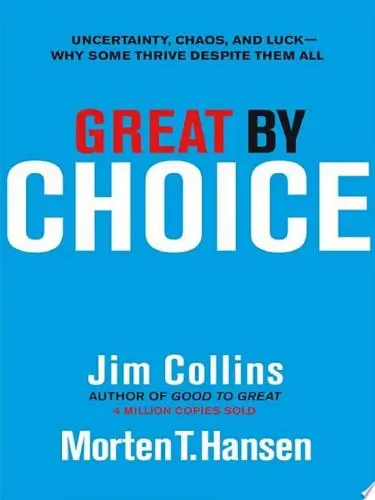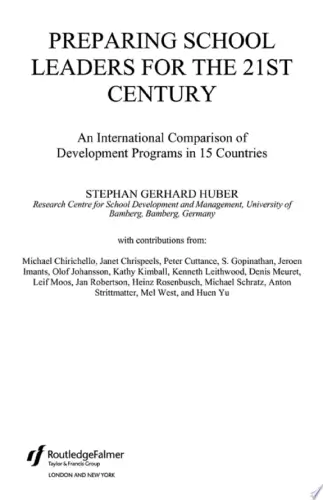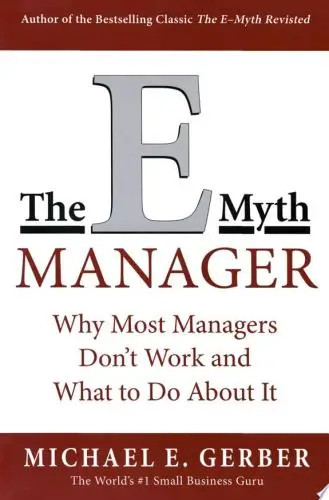First, Break All the Rules
What the World's Greatest Managers Do Differently
What's it about?
First, Break All the Rules transforms management principles by challenging conventional wisdom, advocating for a focus on individual strengths over weaknesses. By emphasizing strengths, managers can cultivate high-performing teams and enhance employee engagement. Packed with practical insights and compelling real-life stories, this book is indispensable for leaders seeking to transform their leadership style.
About the Author
Marcus Buckingham is a British author, motivational speaker, and business consultant known for his work on strengths-based leadership and management. His notable works include "First, Break All the Rules" and "Now, Discover Your Strengths," emphasizing individual strengths and talents as key to personal and organizational success. His unique perspective challenges conventional management wisdom.
10 Key Ideas of First, Break All the Rules
Focus on Strengths, Not Weaknesses
Concentrate on identifying and enhancing employees' strengths rather than spending excessive time trying to improve their weaknesses.
This approach boosts morale and productivity, as individuals feel more competent and engaged when they can excel in areas where they are naturally talented.
It fosters a positive work environment and encourages employees to develop their unique skills, leading to innovative solutions and higher job satisfaction.
Learn DeeperIdentify Your Strengths: Start by taking stock of what you're naturally good at. This could involve reflecting on past successes, asking for feedback from colleagues or friends, or even taking strengths assessment tests online.
Set Strength-Based Goals: Once you've identified your strengths, set personal and professional goals that leverage these abilities. For example, if you're great at public speaking, aim to lead more presentations or workshops in your field.
Seek Out Roles That Match Your Strengths: Look for opportunities, whether in your current job or a new position, that allow you to use your strengths daily. This alignment can lead to greater job satisfaction and performance.
Develop Your Strengths Further: While it's important to recognize your natural talents, continuously working to improve and expand these strengths can lead to even greater success and fulfillment.
- Example
A graphic designer realizes her strength lies in creative storytelling through visuals. She focuses on projects that allow her to use this skill, such as branding and marketing campaigns, and enrolls in a course to hone her storytelling techniques further.
- Example
An IT professional excels in problem-solving and technical troubleshooting but struggles with public speaking. Instead of forcing himself to lead large presentations, he focuses on writing detailed reports and guides for his team, and mentors colleagues one-on-one, where his strengths shine.
Hire for Talent, Not Just Experience or Intelligence
When recruiting, prioritize innate talent over experience or academic intelligence.
Talent, the natural capacity for excellence in a specific activity, is a better predictor of success in a role.
While experience and intelligence are important, they do not guarantee effectiveness in a job.
Focusing on talent allows for the selection of individuals who are inherently suited and motivated for the role, leading to superior performance and engagement.
Learn DeeperIdentify Core Talents: Before starting the hiring process, clearly define the core talents that are crucial for success in the role. Consider what natural abilities or inclinations would make someone excel in this position.
Design Talent-Oriented Interview Questions: Develop interview questions that help uncover a candidate's innate talents. Ask about past experiences where they naturally excelled or felt most engaged.
Use Talent Assessment Tools: Incorporate psychometric tests or talent assessment tools into your recruitment process. These can help identify candidates' strengths and natural abilities, complementing the traditional interview.
Focus on Potential During Onboarding: Once hired, tailor the onboarding process to nurture and develop the identified talents. This ensures that new employees can leverage their natural strengths from the start.
Encourage Talent Development: Foster an environment that encourages continuous development of employees' talents. Offer opportunities for them to further hone their natural abilities through projects, training, or mentorship.
- Example
A tech company looking for a software developer might prioritize problem-solving talent and a passion for technology over specific programming languages. During interviews, they could ask candidates to describe a time when they were faced with a challenging technical problem and how they approached it, rather than focusing solely on their proficiency in a particular language.
- Example
A marketing firm seeking a creative director might value creativity and innovative thinking above years of experience. They could ask candidates to present a portfolio of work that showcases their creative process and discuss how they have pushed boundaries in past projects.
Define the Right Outcomes, Then Let Employees Find Their Path
Set clear expectations regarding the outcomes you desire but give employees the freedom to achieve these results in their own way.
This autonomy empowers them to utilize their strengths and innovate, fostering a sense of ownership and responsibility.
By focusing on outcomes rather than micromanaging processes, you encourage creativity and flexibility, which can lead to more efficient and effective ways to reach goals.
Learn DeeperSet Clear Goals: Begin by clearly defining the outcomes you expect from your team. This could be in terms of project deliverables, sales targets, or customer satisfaction levels. Make sure these goals are measurable, achievable, and understood by all.
Encourage Individual Approach: Once the goals are set, encourage your team members to come up with their own strategies to achieve these outcomes. This could involve brainstorming sessions where each member proposes their approach, highlighting how they can use their unique strengths to contribute.
Provide Resources and Support: Ensure that your team has access to the necessary resources and support to implement their strategies. This could range from training sessions, access to certain tools, or regular check-ins to discuss progress and hurdles.
Celebrate Creativity and Initiative: Acknowledge and reward creative solutions and initiatives taken by team members to achieve the set goals. This could be through public recognition, bonuses, or opportunities for further professional development.
- Example
A marketing team is tasked with increasing website traffic by 20% within three months. The manager sets this clear goal but allows each team member to propose their own strategy based on their expertise—SEO, social media campaigns, content marketing, etc. Regular meetings are held to discuss progress, share insights, and adjust strategies as needed.
- Example
A software development team is given the objective to reduce the load time of their application by 30%. The team leader outlines the desired outcome but lets the developers decide how to achieve it, whether through code optimization, using different technologies, or redesigning certain features. Progress is reviewed in weekly sprints, allowing for adjustments and fostering a collaborative environment.
Invest Time in Your Best People
Allocate more time and resources to your top performers.
These individuals have the highest potential for impact within the organization, and investing in their development maximizes this potential.
This strategy includes offering them challenging projects, opportunities for growth, and recognition.
It not only enhances their performance but also motivates others to excel, creating a culture of achievement and excellence.
Learn DeeperIdentify Your Top Performers: Start by evaluating your team to identify who consistently exceeds expectations. Look for indicators such as project outcomes, initiative, and the ability to inspire others.
Customize Growth Opportunities: For each top performer, create a personalized development plan. This could include advanced training, mentorship opportunities, or stretch assignments that push their boundaries.
Provide Regular Feedback: Schedule frequent one-on-one meetings with your top performers to discuss their progress, challenges, and future goals. Use this time to offer constructive feedback and recognize their achievements.
Encourage Autonomy: Give your best people the freedom to innovate and make decisions. Autonomy is a powerful motivator and can lead to even greater achievements within the organization.
Foster a Culture of Recognition: Publicly acknowledge the successes of your top performers. This not only boosts their morale but also sets a benchmark for excellence within the team.
- Example
A software development team leader identifies a developer who consistently delivers high-quality code ahead of deadlines. The leader assigns them to lead a critical new project, offering an opportunity for growth and visibility within the company.
- Example
A marketing manager notices a team member's exceptional creativity and ability to engage customers. They arrange for this employee to attend an advanced digital marketing course, enhancing their skills and benefiting the team's overall strategy.
Do Not Assume That Great Managers Are Born, Not Made
Recognize that while inherent talent is crucial, effective management skills can also be developed through training and experience.
Provide managers with the tools, training, and feedback they need to succeed.
Encourage a growth mindset, where managers are always learning and adapting.
This approach ensures that your leadership team continues to evolve and respond effectively to new challenges.
Learn DeeperSeek Out Diverse Experiences: Actively pursue opportunities to manage different types of projects and teams. This variety will challenge you and help develop a broad skill set.
Invest in Continuous Learning: Enroll in management training courses, attend workshops, and read up on the latest in leadership theory and practice. Always be on the lookout for new ideas and strategies to improve your management style.
Solicit Feedback Regularly: Ask for feedback from your team, peers, and superiors on your management style and effectiveness. Use this feedback to make targeted improvements.
Embrace a Growth Mindset: View every challenge as an opportunity to learn and grow. Encourage your team to adopt this mindset as well, creating a culture of continuous improvement.
Mentor and Be Mentored: Seek out a mentor who can provide guidance and insight based on their own experiences. Similarly, offer to mentor less experienced managers, sharing your knowledge and learning through teaching.
- Example
A manager notices her team's productivity dips every Wednesday. She decides to implement a mid-week check-in meeting to address any roadblocks and provide motivation. Over time, she adjusts the format based on feedback from her team, leading to improved productivity and morale.
- Example
After receiving feedback that his communication style was too direct and sometimes off-putting, a manager enrolls in a workshop on effective communication. He practices the techniques learned, such as active listening and empathy, in his daily interactions. Over time, he notices a positive change in how his team responds to him.
Deeper knowledge. Personal growth. Unlocked.
Unlock this book's key ideas and 15M+ more. Learn with quick, impactful summaries.
Read Full SummarySign up and read for free!
First, Break All the Rules Summary: Common Questions
Experience Personalized Book Summaries, Today!
Discover a new way to gain knowledge, and save time.
Sign up for our 7-day trial now.
No Credit Card Needed

Similar Books

Emotional Intelligence at Work
Dalip Singh
Seeing the Big Picture
Kevin Cope
Leadership Is Concept Heavy
Dr. Enoch Antwi
Great by Choice
Jim Collins
The Leader′s Guide to Coaching in Schools
John Campbell
Preparing School Leaders for the 21st Century
Stephan Gerhard Huber
The E-Myth Manager
Michael E. Gerber
Leadership Is Language
L. David Marquet
Start-up Nation
Dan Senor
The Founder's Dilemmas
Noam WassermanTrending Summaries

Peak
Anders Ericsson
Never Split the Difference
Chris Voss
Smart Brevity
Jim VandeHei
The Psychology of Money
Morgan Housel
The First 90 Days
Michael D. Watkins
Atomic Habits
James Clear
Thinking, Fast and Slow
Daniel Kahneman
The Body Keeps the Score
Bessel van der Kolk M.D.
The Power of Regret
Daniel H. Pink
The Compound Effect
Darren HardyNew Books

The ^AOxford Handbook of Job Loss and Job Search
Ute-Christine Klehe PhD
Job Interviews For Dummies®
Joyce Lain Kennedy
Job Interviews In A Week
Alison Straw
Handbook of Career Development
Gideon Arulmani
The Art of Spending Money
Morgan Housel
$100M Offers
Alex Hormozi
A Candle for Kiri
Edna Mae Holm
Principles of Marketing, Global Edition
Gary Armstrong
Serpent Rising: The Kundalini Compendium
Neven Paar

